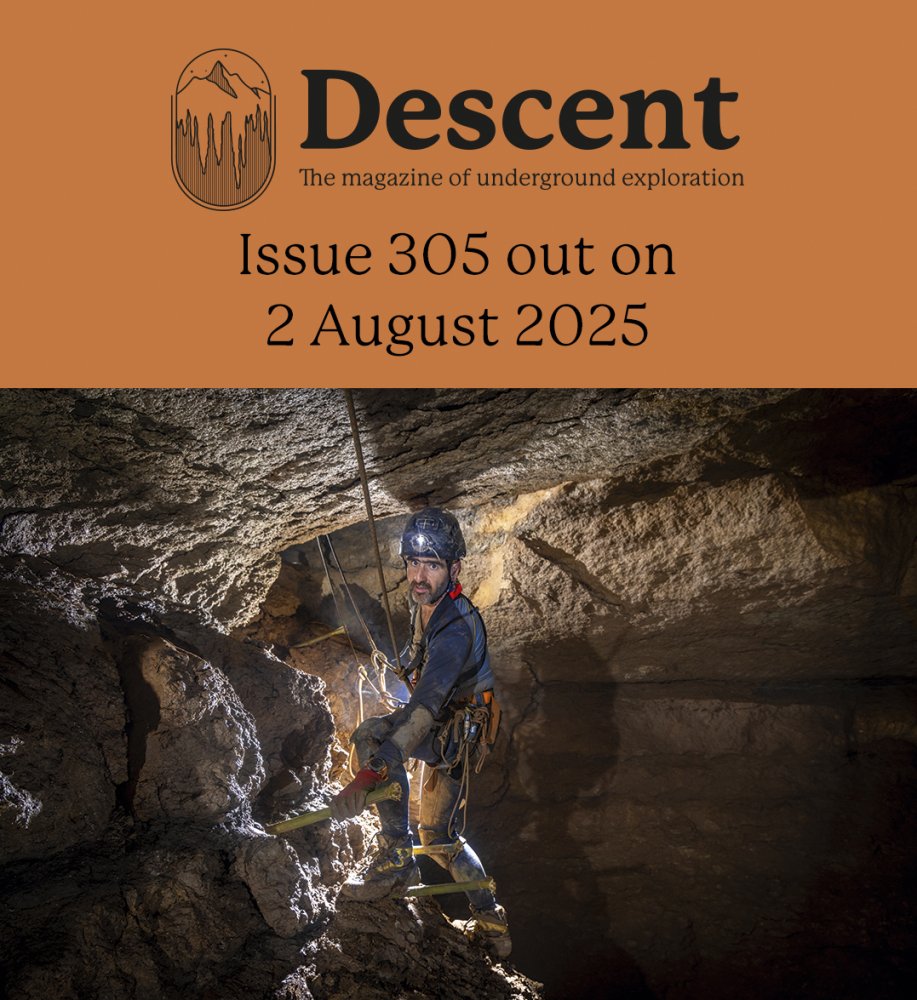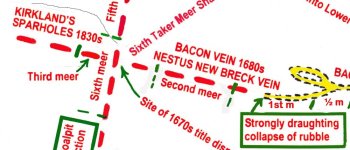History Trog
Member
Thought it appropriate to explain the progress of the Matlock book – slow, although it has had all my spare time for years.
Last summer, I signed off the text to the editor, whose verdict was that it was “a phenomenal piece of work”. The reaction of the PDMHS chairman was to introduce me to people at Matlock, telling them that I know “a hundred times more” about the mines than anyone else (no pressure there then!). I must admit that it was a relief to hear my pre-eminence in this field at last publicly acknowledged, even if it was exaggerated.
I have recently sent the editor the 61 diagrams, many of them complex. Much time had been wasted drawing these by hand and scanning them, which resulted in a very unsatisfactory appearance. In the nick of time, I managed to acquire enough facility with Photoshop to substantially rework the diagrams – thought it worthwhile because otherwise they would have spoiled the book.
I guess many enthusiasts will first turn to the detailed area maps, which instantly render obsolete those already published and would have been worth a fortune to the fluorspar miners. For instance, when Lewis Pearson drove the incline level towards what was (wrongly) called Black Ox Title in 1970, he was in fact acting on a vague rumour that there was a lost pipe on the east side of Masson Cavern. He had only a few thousand pounds of financial backing and I chatted with him in the level just before its abandonment but he had wrongly located the drive. I now know the name of the lost pipe, its position and history – its filled-in shafts were still visible if one knew where to look. This is just one of the lost systems associated with Masson, which lie like time capsules waiting to be unearthed if any serious underground blokes should ever turn up – needs someone like the late Doug Nash or Lawrence Hurt.
Amusingly, someone wrote in a recent PDMHS publication that the incline level was intended to pass through the Lower Lava so as to work the Black Ox Title beneath. In fact, the lava there is about 250 feet thick, the incline would have to have been some 1,500 feet long, but no proven deposits exist beneath. Not even the largest mineral company would undertake such a gamble. It is so easy to write to that standard but so very difficult to get to the truth.
For the diagrams, I began by reassessing the original archive sources, which yielded some new interpretations, for instance the exact location of Bennett Hole, an obscure cave in High Tor far away from the prominent openings on Hard Rake and High Tor Rake. Twenty years ago, I had deduced the correct range of Bennett Hole Vein and assumed that the “hole” (cave) was near river level but a field trip drew a blank. The new source showed it was half way up the cliff face and I again visited the site but could find no reasonable way of approach from any direction, annoying because this may have been the long-lost hermit’s cave and therefore historically important. Presumably, Bennett Hole was a small cave-pipe vein/mine developed within the strata of reef knoll limestone in High Tor, similar to Cockaberry Hole in the bed of cockleshells in Lovers Walks at Matlock Bath, which I have discussed elsewhere. If so, it should be mentioned (tho’ not by name) in D. Biggins 1970 PhD thesis about the Carboniferous reef knoll at High Tor but I have not had sight of this. Could find nothing about it in caving literature (being on a caving website, I had better confess that I have never had anything to do with caves, only recording them as a historian). If anyone, caver or climber, has come across this cave, perhaps they could post details here – I cannot make additions to the book now.
Apologies for both the delays and the length of this post, which is intended to illustrate the difficulties faced in compiling a definitive account (as opposed to the usual skim-over standard) in the hope that interested parties might continue to show patience. To those that do, my sincere thanks for, without people taking an interest, such daunting projects would be merely empty academic exercises.
Last summer, I signed off the text to the editor, whose verdict was that it was “a phenomenal piece of work”. The reaction of the PDMHS chairman was to introduce me to people at Matlock, telling them that I know “a hundred times more” about the mines than anyone else (no pressure there then!). I must admit that it was a relief to hear my pre-eminence in this field at last publicly acknowledged, even if it was exaggerated.
I have recently sent the editor the 61 diagrams, many of them complex. Much time had been wasted drawing these by hand and scanning them, which resulted in a very unsatisfactory appearance. In the nick of time, I managed to acquire enough facility with Photoshop to substantially rework the diagrams – thought it worthwhile because otherwise they would have spoiled the book.
I guess many enthusiasts will first turn to the detailed area maps, which instantly render obsolete those already published and would have been worth a fortune to the fluorspar miners. For instance, when Lewis Pearson drove the incline level towards what was (wrongly) called Black Ox Title in 1970, he was in fact acting on a vague rumour that there was a lost pipe on the east side of Masson Cavern. He had only a few thousand pounds of financial backing and I chatted with him in the level just before its abandonment but he had wrongly located the drive. I now know the name of the lost pipe, its position and history – its filled-in shafts were still visible if one knew where to look. This is just one of the lost systems associated with Masson, which lie like time capsules waiting to be unearthed if any serious underground blokes should ever turn up – needs someone like the late Doug Nash or Lawrence Hurt.
Amusingly, someone wrote in a recent PDMHS publication that the incline level was intended to pass through the Lower Lava so as to work the Black Ox Title beneath. In fact, the lava there is about 250 feet thick, the incline would have to have been some 1,500 feet long, but no proven deposits exist beneath. Not even the largest mineral company would undertake such a gamble. It is so easy to write to that standard but so very difficult to get to the truth.
For the diagrams, I began by reassessing the original archive sources, which yielded some new interpretations, for instance the exact location of Bennett Hole, an obscure cave in High Tor far away from the prominent openings on Hard Rake and High Tor Rake. Twenty years ago, I had deduced the correct range of Bennett Hole Vein and assumed that the “hole” (cave) was near river level but a field trip drew a blank. The new source showed it was half way up the cliff face and I again visited the site but could find no reasonable way of approach from any direction, annoying because this may have been the long-lost hermit’s cave and therefore historically important. Presumably, Bennett Hole was a small cave-pipe vein/mine developed within the strata of reef knoll limestone in High Tor, similar to Cockaberry Hole in the bed of cockleshells in Lovers Walks at Matlock Bath, which I have discussed elsewhere. If so, it should be mentioned (tho’ not by name) in D. Biggins 1970 PhD thesis about the Carboniferous reef knoll at High Tor but I have not had sight of this. Could find nothing about it in caving literature (being on a caving website, I had better confess that I have never had anything to do with caves, only recording them as a historian). If anyone, caver or climber, has come across this cave, perhaps they could post details here – I cannot make additions to the book now.
Apologies for both the delays and the length of this post, which is intended to illustrate the difficulties faced in compiling a definitive account (as opposed to the usual skim-over standard) in the hope that interested parties might continue to show patience. To those that do, my sincere thanks for, without people taking an interest, such daunting projects would be merely empty academic exercises.





